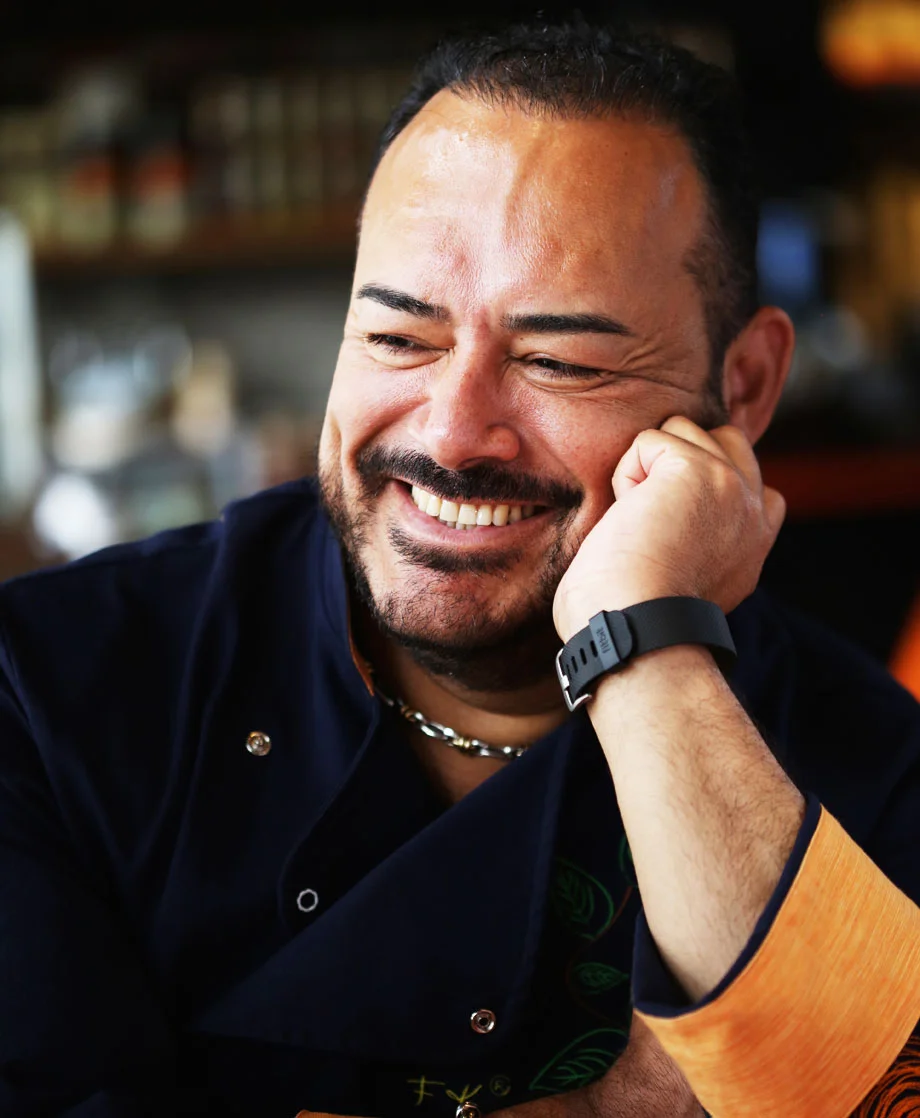A Chat with the Chef: Gabriela Ruíz of Carmela y Sal
At only 31, Gabriela Ruiz has risen from her humble culinary roots and is fast becoming the country’s premier star chef. She heads the kitchen at the tony Carmela y Sal, one of the capital’s few restaurants offering an interpretive version of the cooking of the south-east of the country, that is, the state of Tabasco, reaching into the Yucatan peninsula. Her food makes a lasting impression; she evades fashion, and concentrates on seductive, eater-friendly dishes that both comfort and challenge, a difficult feat. We recently sat down in the airy, sun-drenched dining room before service, to chat about her career and kitchen.
Nicholas Gilman:
How and when did your interest in food and cooking begin?
Gabriela Ruiz:
I realized pretty early on that I was fascinated by food. I loved watching people eat; the way they disconnect from the outside world when they put something good into their mouth. My parents were both from Tabasco, in the south-east of Mexico and I grew up eating dishes from our area.
NG: What distinguishes the cuisine of Tabasco?
Tostadas ‘mentiras’ made with coconut
GR: The climate there is hot and humid and so everything is tropical. We use coconut, tropical fruits, lots of chili. We have, for example, puchero a hearty meat soup which is a Spanish dish adapted to what there is in Tabasco which is to say, a lot of roots like taro, cassava and fruits like pan de sopa that is used a lot in the South American gastronomy. It’s a seasonal dish. That’s the kind of thing we ate at home.
NG: Where did you study and how did you get into the restaurant business?
GR: Though my dream was to study at the Culinary Institute in New York, we couldn’t afford that so I went to school in Mérida. Maybe that’s a good thing, because it kept me focused on the kind of food I grew up eating. With a partner, I opened a catering business, Gourmet MX, in an abandoned space. We couldn’t quite make the rent so we set up a few tables and started offering dinners: word got out, and that’s how I began as a restaurateur. After a couple of years we also opened a cocktail bar.
NG: Kind of like a paladar in Cuba, right?
GR: Yes! You open the kitchen and sell what you are buying and making for your home. We were really a catering business in the beginning then became a proper restaurant.
A sope de pulpo y chicharrón
NG: So it became known as one of the few places in Villahermosa, to be exact, where one could sample carefully prepared Tabascan cooking. Then you started to be noticed, by Millesime, and most recently by Culinaria Mexicana’s Guia de los 120 Mejores Restaurantes de Mexico, and you came to work in Mexico City. How does Carmela y Sal differ from your old place?
GR: Carmela y Sal is so the opposite of our old space. It’s huge, ultra modern, in an office building. My kitchen is up to date, way fancier and bigger than my old one. But I actually stay away from modern tools. I never worked in Spain or any of that, and I’m not interested in high technology. OK, I have a blender, but that’s about it. I have extra flat grills because we prepare a lot of dishes that way. To grind our salsas and moles, we use the traditional volcanic stone molcajete. We use metates, also stone, for grinding chocolate. We did use traditional clay comales for roasting tortillas and other breads, but, they kept breaking, it just wasn’t working, so we had to switch to metal.
I now work with a staff of 24, and I also employ women who have special, particularly Mexican skills. Verónica’s only job is to make tortillas by hand. And Sra. Ana does the salsas. Tortillas and salsas are so essential to Mexican cuisine.
short rib with smoky ‘chirmol’
NG: How would you describe the food at Carmela y Sal; is it traditional Tabascan cooking?
GR: No, not at all. It’s traditional Mexican cuisine inspired by the dishes of the south west of the country. Because I grew up there and studied in Mérida, that’s my biggest influence. I use many tropical ingredients, for example, coconut and bananas—in Tabasco there are many kinds of them. One of my favorite dishes here is the “tierra de luna” - it’s really an empanada made with very ripe plantain, filled with black beans and topped with a reduced tomato sauce. It’s called that because as a little girl I thought I didn’t like black beans so my dad told me, “it’s not beans, I went to the moon and collected some dirt there and brought it back; try it!” So of course, I grew to love it. I do cochinita pibil, the famous spicy yucatecan pork dish, but as cannelloni. And lengua (tongue) in a reduced sauce of the puchero I mentioned earlier. There are many references to the Yucatan cooking that people are familiar with but nothing is totally traditional.
NG: What kinds of ingredients do you prefer to work with?
Jícamas con pesto; “I love vegetables”
GR: I love vegetables. There are so many people who come here who are vegetarian or even vegan. I always felt bad just throwing some vegetables on the grill for them so I started experimenting and inventing vegetable-based dishes. One of the most popular is the “tostadas mentiras” - called “lies” because they seem like they are meat-based but in fact are made of coconut, both young and mature.
NG: How is it to be working as a woman in the restaurant industry?
GR: Well, I don’t exactly consider myself a feminist, but it really bothered me recently when some guy said to me, “don’t you think of settling down to have children, isn’t that the more natural thing to do?” I thought about it; after all, women are the ones who feed and nurture us from the very beginning, so isn’t it natural for us to work as cooks and chefs? And I believe that women are particularly sensitive when making certain kinds of foods.
NG: Sounds like you’re a feminist to me! There is a big tradition of women in the Mexican kitchen. I see you as the continuation of that. What plans do you have for the future?
GR: My business partners want me to open another restaurant, maybe in the US. I’d prefer to wait longer because Carmela y Sal is only a year old and I’d rather dedicate more time to being here and perfecting it. I’ll try to stall them off as long as possible, but that’s how the business goes.
Carmela y Sal
https://www.carmelaysal.mx
Torre Virreyes, Calle Pedregal N.24
Del. Miguel Hidalgo
Tel. 55 7600 1280
Open Monday - Wednesday 1 - 11 p.m., Thursday - Saturday 1 - 11:30 p.m., Sunday 1 - 7 p.m.
Photos: Sebastian Manterola Ogarrio











